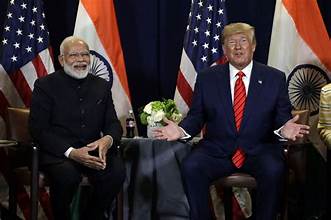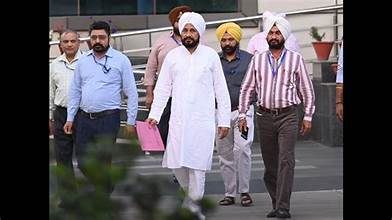Introduction to India’s Offer
India has proposed a significant reduction in its tariff gap with the United States, aiming to bring it down from 13% to less than 4%. This offer is part of efforts to secure an exemption from President Donald Trump’s tariff hikes. The proposal is a crucial step as both nations work swiftly to finalize a trade deal.
U.S.-India Trade Relations
The United States is India’s largest trading partner, with bilateral trade reaching approximately $129 billion in 2024. India currently has a $45.7 billion trade surplus with the U.S., which makes this proposed deal significant for both economies. This agreement comes at a time when both countries are eager to reduce trade barriers and enhance economic ties.
U.S. Approach to Recent Trade Deals
Recently, the U.S. struck a “breakthrough deal” with the United Kingdom that lowered tariffs on U.S. goods. While maintaining a 10% base tariff, the deal serves as a model for future agreements. This includes the India-U.S. deal, which has seen a temporary pause in the imposition of tariffs like the 26% tariff on Indian imports.
Details of India’s Tariff Reduction Offer
India has proposed to eliminate tariffs on 60% of tariff lines in the first phase of the trade deal. This could dramatically boost bilateral trade by significantly lowering tariff barriers between the two nations. In return, India is requesting preferential access to nearly 90% of U.S. imports from India.
Key Sectors Seeking Preferential Access
India has specifically asked for preferential market access for important export sectors, including:
- Gems and jewelry
- Leather
- Textiles
- Chemicals
- Oilseeds
- Shrimp
This preferential treatment would offer India better trade terms compared to other countries, which could help its key industries grow.
India’s Proposal for U.S. Exports
India is also making moves to enhance the appeal of the deal for the U.S. by easing export regulations on high-value products such as:
- Aircraft and parts
- Luxury cars
- Medical devices
- Telecom equipment
These regulatory changes would open up more avenues for U.S. exports to India and deepen the economic relationship.
Technology Sector Collaboration
In addition to tariffs, India seeks to be treated on equal footing with U.S. allies such as Japan, Australia, and the UK in critical technology sectors like artificial intelligence (AI), semiconductors, and biotech. India is aiming to access more technological collaborations and investment opportunities in these areas.
Conclusion: Next Steps in the Negotiations
India is moving quickly with its trade negotiations, and a delegation of Indian officials is expected to visit the U.S. later this month. India’s Trade Minister, Piyush Goyal, may also participate in the discussions, though his visit is not confirmed. This trade deal has the potential to reshape economic relations between India and the U.S. and could be a milestone in global trade.







